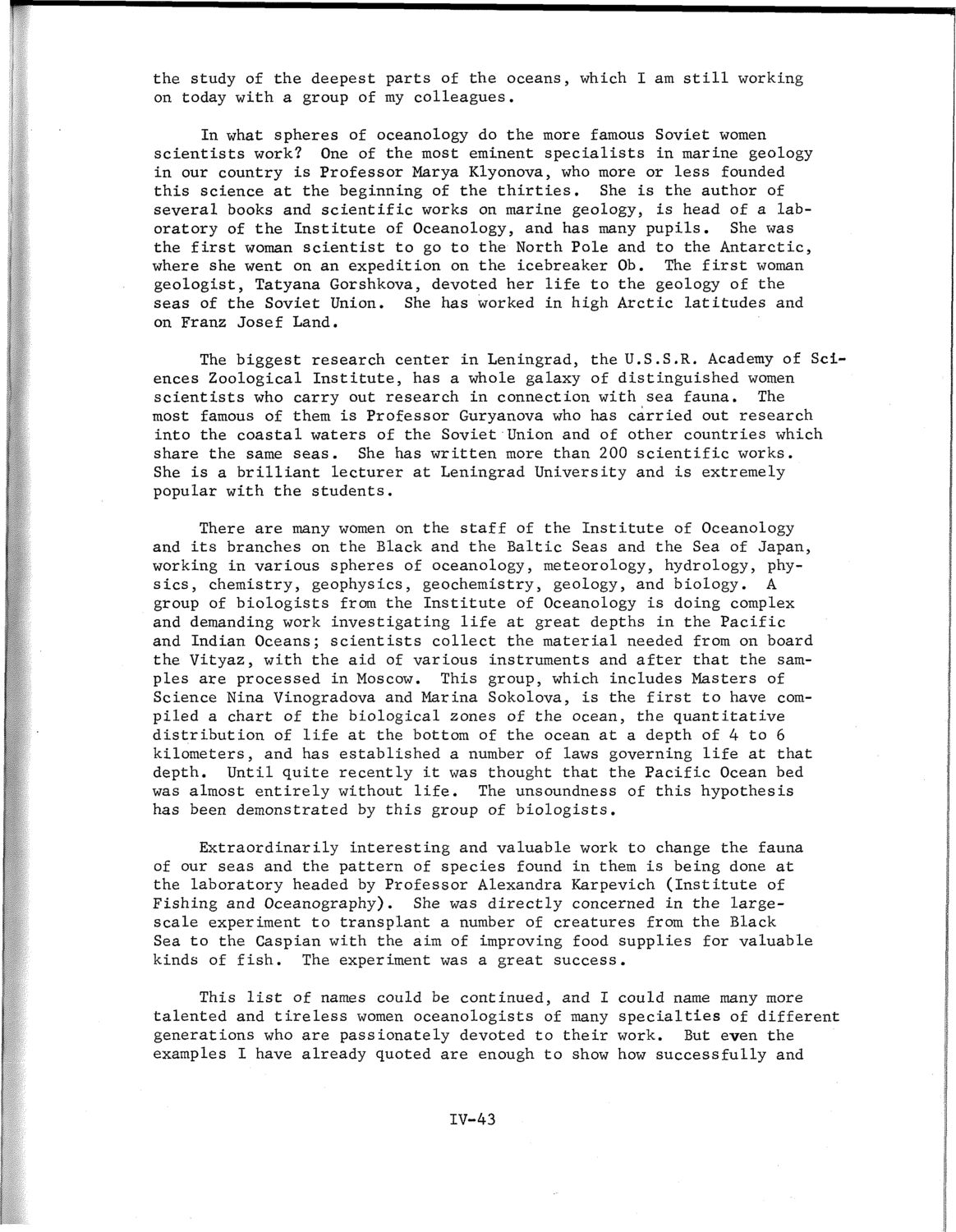| |
| |
Caption: SWE - Proceedings of the First International Conference of Women Engineers and Scientists
This is a reduced-resolution page image for fast online browsing.

EXTRACTED TEXT FROM PAGE:
the study of the deepest parts of the oceans, which I am still working on today with a group of my colleagues. In what spheres of oceanology do the more famous Soviet women scientists work? One of the most eminent specialists in marine geology in our country is Professor Marya Klyonova, who more or less founded this science at the beginning of the thirties. She is the author of several books and scientific works on marine geology, is head of a laboratory of the Institute of Oceanology, and has many pupils. She was the first woman scientist to go to the North Pole and to the Antarctic, where she went on an expedition on the icebreaker Ob. The first woman geologist, Tatyana Gorshkova, devoted her life to the geology of the seas of the Soviet Union. She has worked in high Arctic latitudes and on Franz Josef Land. The biggest research center in Leningrad, the U.S.S.R. Academy of Sciences Zoological Institute, has a whole galaxy of distinguished women scientists who carry out research in connection with sea fauna. The most famous of them is Professor Guryanova who has carried out research into the coastal waters of the Soviet Union and of other countries which share the same seas. She has written more than 200 scientific works. She is a brilliant lecturer at Leningrad University and is extremely popular with the students. There are many women on the staff of the Institute of Oceanology and its branches on the Black and the Baltic Seas and the Sea of Japan, working in various spheres of oceanology, meteorology, hydrology, physics, chemistry, geophysics, geochemistry, geology, and biology. A group of biologists from the Institute of Oceanology is doing complex and demanding work investigating life at great depths in the Pacific and Indian Oceans; scientists collect the material needed from on board the Vityaz, with the aid of various instruments and after that the samples are processed in Moscow. This group, which includes Masters of Science Nina Vinogradova and Marina Sokolova, is the first to have compiled a chart of the biological zones of the ocean, the quantitative distribution of life at the bottom of the ocean at a depth of 4 to 6 kilometers, and has established a number of laws governing life at that depth. Until quite recently it was thought that the Pacific Ocean bed was almost entirely without life. The unsoundness of this hypothesis has been demonstrated by this group of biologists. Extraordinarily interesting and valuable work to change the fauna of our seas and the pattern of species found in them is being done at the laboratory headed by Professor Alexandra Karpevich (Institute of Fishing and Oceanography). She was directly concerned in the largescale experiment to transplant a number of creatures from the Black Sea to the Caspian with the aim of improving food supplies for valuable kinds of fish. The experiment was a great success. This list of names could be continued, and I talented and tireless women oceanologists of many generations who are passionately devoted to their examples I have already quoted are enough to show could name many more specialties of different work. But even the how successfully and IV-43
| |